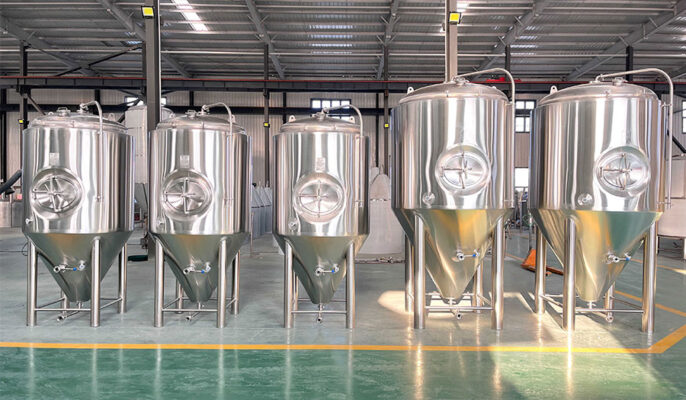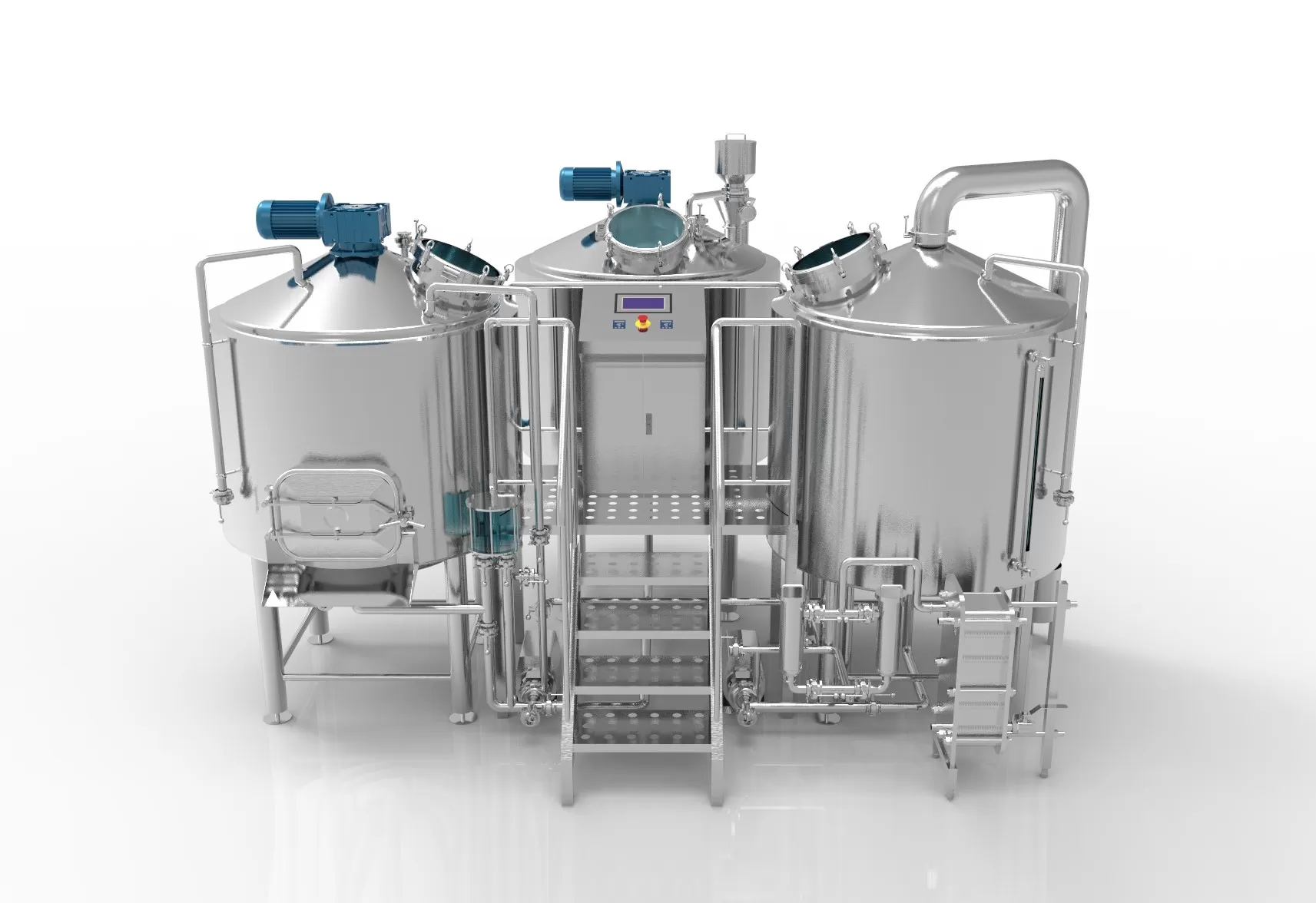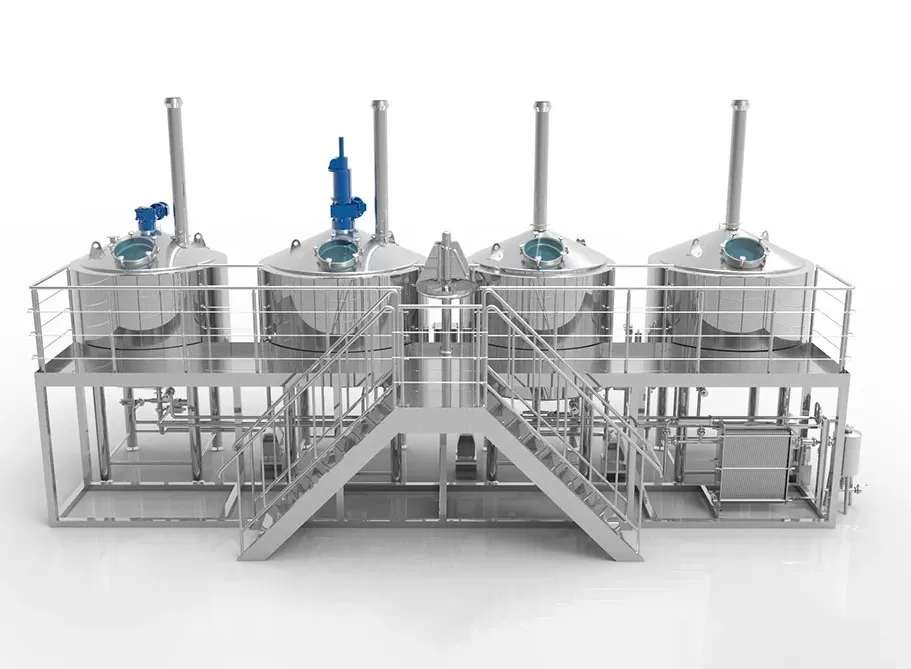Conical fermentation tanks are the gold standard for beer brewing. A conical fermenter is not a necessity for home brewers and professional winemakers, but it can be a good upgrade from a traditional barrel or carboy. With a conical fermenter, there is no need to store the beer in another container, and spent yeast can be captured for use in future batches. Whether you are an experienced winemaker or new to the world of fermentation, this guide will provide you with insights about conical fermenters to help you choose a conical fermenter.
O que é um conical fermentation tanks?
A conical fermentation tanks is a conical brewing vessel with a pointed bottom. It’s usually made of stainless steel or food-grade plastic and is designed for fermenting beer or wine. The conical shape allows for easy separation of sediment and yeast, resulting in a clearer, cleaner end product. The best conical fermentation tank are those that are conical near the bottom and have a valve. The valve handles yeast with ease. Additionally, you can drop the yeast and clean the fermenter before recycling it. Depending on the fermentation tanks proposed use, you can sale either a plastic conical fermentation tank or a stainless steel conical fermentation tanks.
What should you pay attention to when using a fermentation tank?
- The ideal situation is stable, cold temperatures. The average fermentation temperature for light ales is 64 to 72 °F (18 to 22 °C), with lagers requiring a lower temperature of 45 to 55 °F (7 to 13 °C).
- You also want the fermenting beer to remain undisturbed. Yeasts are very moody and they like to be left alone while they work.
- Cleans sediment and dead yeast from tank bottom; drains beer undisturbed for bottling or conditioning.

Conical fermentation tank brewing process
- Primary fermentation: After the wort is cooled and transferred to the fermenter, yeast is added and fermentation begins. The conical bottom allows carbon dioxide to escape while keeping the yeast suspended in the wort, converting sugar into alcohol.
- Sediment collection: As fermentation proceeds, yeast and other particles settle at the bottom of the cone, leaving a clearer beer layer on top.
- Optional dry hops (if your fermenter has a dedicated port): You can add hops at this stage for extra aroma and flavor without introducing too many hops.
- Yeast harvesting (optional): If desired, you can harvest yeast for future batches through the bottom valve.
- Transfer to a secondary fermenter (optional): If you plan to age your beer for a long time, you can transfer the clear beer to a secondary fermenter, leaving the sediment behind.
- Bottle or keg: After fermentation is complete and the beer is clear, you can bottle or keg it and enjoy it.
Why is shape important during fermentation?
The shape of the fermentation vessel plays a vital role in the fermentation process. In traditional cylindrical fermenters, the yeast settles at the bottom and is difficult to remove without disturbing the sediment. This can result in unwanted flavors and aromas in the final product. The conical shape of the conical fermentation tank allows the yeast and sediment to settle to the bottom, making it easier to separate them from the liquid. This separation results in a cleaner, more consistent end product.
Conical fermentation tank help the removal of unwanted by-products produced during the fermentation process. As the yeast settles to the bottom of the cone, it forms a dense layer that acts as a natural filter, trapping any solids or impurities. Not only does this improve the clarity of the final product, it also reduces the need for more filtration steps, saving winemakers time and resources.
The tapered design allows many fermenters to be stacked on top of each other, maximizing vertical space use. This is especially beneficial for smaller operations or facilities with limited floor space, as it allows for higher production capabilities without requiring more floor space.
Advantages of conical fermentation tanks
Conical fermentation tanks offer a range of advantages that make them a popular choice among winemakers and beginners alike. Let’s take a closer look at the benefits of using these innovative containers.
Improved yeast harvest
One of the significant advantages of conical fermenters is the ease of harvesting yeast. Using a conical fermenter allows brewers to collect yeast from the bottom of the vessel without disturbing the sediment. This allows you to reuse the yeast, saving time and money. By collecting and reusing yeast, brewers can maintain the consistency of their beer and achieve the desired flavor profile.
Enhance flavor and aroma
Separating the yeast and sediment in a conical fermenter results in a cleaner, more refined end product. By minimizing contact with yeast and sediment during fermentation, conical fermenters help preserve the flavor and aroma of your beer or wine, resulting in a more enjoyable drinking experience.
Fácil de limpar e manter
Conical fermentation tanks are designed to be easy to clean and maintain. The conical shape removes sediment and yeast, simplifying the cleaning process. Additionally, many conical fermenters are made of stainless steel, making them very durable and easy to sterilize. This means winemakers and distillers can spend less time scrubbing and more time focusing on their craft. With the right equipment, maintaining a sanitary environment for fermentation is a breeze.
Rich features and accessories
The stainless steel conical unit tank is equipped with various functions such as aeration/carburization, pressure gauge, air column, purge rod, rotary valve, sampling valve, and drying hopper. These accessories provide brewers with unparalleled control and flexibility, allowing them to tailor their equipment to specific brewing goals.
How to choose a suitable conical fermentation tank?
Material considerations
One of the first things to consider is the fermenter material. Conical fermentation tank are usually made of stainless steel or food-grade plastic. Stainless steel fermenters are known for their durability, making them a long-term investment. They are also easier to clean, which is a significant advantage when it comes to maintaining hygiene during fermentation. Additionally, stainless steel fermenters offer better temperature control, allowing you to control fermentation conditions more . Food-grade plastic fermenters, , are lighter and cheaper, making them a popular choice for home brewers who are starting or have limited space.
Dimensions and capacities
Another important consideration is the size and capacity of the conical fermentation tank. The right size depends on your brewing or wine making needs. Consider the batch sizes you use and choose a fermentation tank that can accommodate the volume you must. There must be enough space for the fermentation process to take place without spillage or affecting the quality of the beer or wine. Also, consider the space available in your brewing area. You need to make sure that the fermentation tank is comfortable to install and easy to operate during the fermentation process.
Cost vs value
Cost is another factor to consider when choosing a conical fermentation tank. Assess your budget and compare different options to find the best value fermenter for your money. While it’s tempting to go with the cheapest option, it’s also important to consider long-term value. Find a fermentation tank that not only fits your budget, but also offers the features, quality, and durability you need. Investing in a high-quality fermentation tank can save you money in the long run by providing better performance and longer service life. Contact us and Micet group can help you make the right decision.
Tips for using conical fermentation tank
Controlo da temperatura
Maintaining the correct temperature during fermentation is crucial for optimal results. Many conical fermentation tank are equipped with temperature control options such as built-in cooling coils or heating pads. Use these features to ensure precise temperature control throughout the fermentation process.
Limpar e desinfetar
Proper cleaning and disinfection are key to preventing contamination and ensuring final product quality. clean the conical fermentation tank after each use using appropriate cleaners and disinfectants. Follow the manufacturer’s cleaning and sanitizing instructions to maintain the performance and longevity of your fermenter.
Loja
When not in use, store the conical fermentation tank in a clean, dry place. Avoid exposing the fermentation tank to excessive heat or direct sunlight as this can affect the performance and durability of the fermenter. Proper storage will help extend the life of your conical fermenter and ensure its availability for future use.




